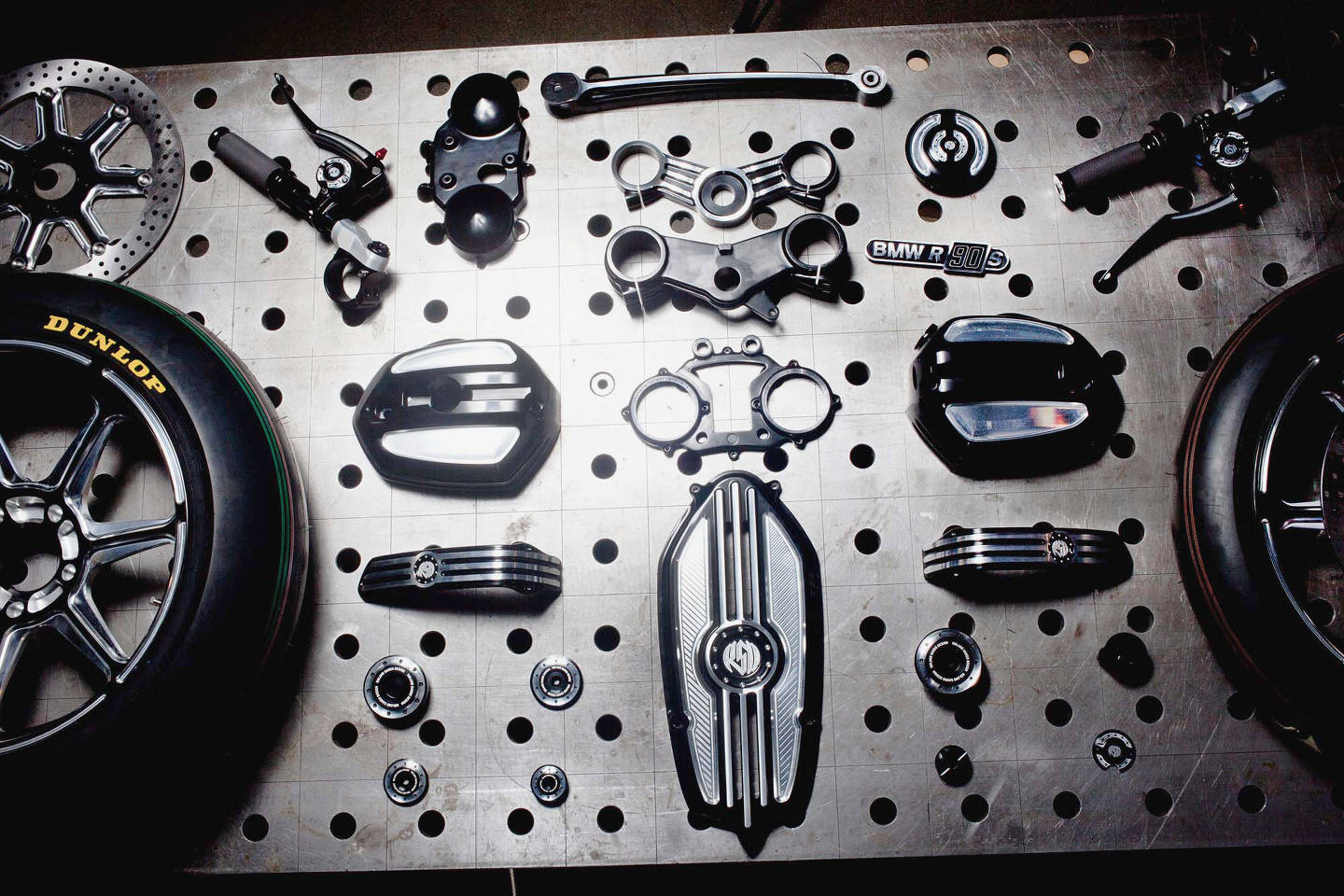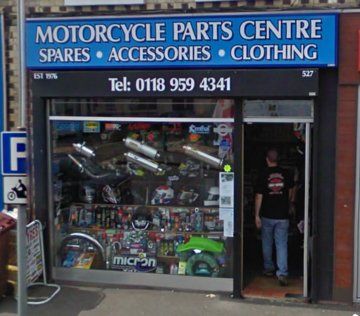Must-Have Motocross Gear: Raise Your Riding Experience Today
Must-Have Motocross Gear: Raise Your Riding Experience Today
Blog Article
Understanding the Crucial Parts of a Bike: A Comprehensive Overview for Fanatics
For bike enthusiasts looking to boost their riding experience and guarantee their bikes run efficiently, recognizing the vital components of a motorbike is critical. Each aspect, from the engine's complex functions to the important role of the stopping devices, not just affects efficiency however additionally safety and convenience.
Engine Elements

The camshaft plays an essential duty in managing the timing of the engine's shutoffs, making certain the specific opening and closing essential for effective gas and air consumption, as well as exhaust expulsion. This timing is vital to preserving ideal engine efficiency and efficiency. Furthermore, the carburetor or gas shot system, depending upon the motorbike design, is accountable for blending air with fuel in the appropriate ratio for combustion.
The air conditioning system, either air or liquid-based, functions to maintain the engine's temperature within operational limitations, protecting against overheating and making certain durability - motorcycle shop. Each part, meticulously developed and integrated, adds to the seamless procedure of the engine, specifying the bike's power output and total performance
Transmission System
Essential to the bike's capability, the transmission system makes certain reliable power transfer from the engine to the wheels. This system consists of a number of important elements, including the clutch, transmission, and final drive, each playing an essential duty in equating the engine's power into motion. The clutch, usually run by a hand bar, serves to disengage the engine and involve from the transmission, enabling for smooth gear adjustments and controlled acceleration.
The transmission, typically described as the transmission correct, consists of a collection of equipments that riders can manually shift through to change the bike's speed and torque result. These gears are set up in a sequence that makes it possible for the motorbike to accelerate smoothly and keep ideal engine performance throughout various speeds. A lot of motorcycles utilize a sequential transmission, requiring the biker to move equipments in an established order.
Braking Mechanisms
While comprehending the transmission system is vital to utilizing a motorbike's power, equally vital is the ability to regulate and stop that power efficiently, which is where stopping mechanisms enter into play. Brakes are crucial for safety and security and efficiency, giving the biker with the needed control to navigate various terrains and conditions. Commonly, bikes feature two types of stopping systems: disc brakes and drum brakes.
Disc brakes are extra widespread in contemporary motorcycles as a result of their premium efficiency. They are composed of a brake disc, caliper, and pads. When triggered, the caliper squeezes the brake pads against the rotating disc, transforming kinetic power into heat, consequently reducing the wheel. This system offers much better warm dissipation, consistent performance, and improved quiting power, especially in wet problems.
Conversely, drum brakes, though less typical, are still found in some motorbikes. They function by pushing brake shoes against the inner surface area of a drum connected to the wheel. While normally less effective in warmth dissipation and stopping power, drum brakes are simpler and much more cost-efficient.
Comprehending these stopping systems' nuances enables motorcyclists to maintain their motorbikes appropriately and value the design that makes sure reliable and safe stopping.
Suspension and Steering
Suspension and steering systems are essential parts that dramatically influence a motorcycle's handling and ride convenience. The suspension system, including forks at the front and shock absorbers at the back, takes in roadway abnormalities, improving security and control. Front forks, inverted or normally telescopic, compress and rebound to alleviate influences, while back shock absorbers preserve tire contact with the road, critical for grip and safety and security.
Guiding, focused around the handlebars, links the rider to the motorbike's directional control. The guiding head bearings ensure smooth procedure, enabling precise ability to move. Correct positioning and upkeep of these bearings are essential for predictable guiding response and lowering rider tiredness.
The suspension's adjustability is another critical facet; preload, damping, and rebound settings enable customization to suit various riding problems and designs. This versatility is necessary for enhancing performance, whether navigating metropolitan roads or tackling sturdy trails. Developments like digital suspension systems offer real-time adjustments, boosting ride top quality across varied surfaces.

Electric Systems
After making sure a smooth and controlled experience via effective suspension and steering systems, focus transforms to the electric systems, an essential aspect of modern-day bikes. These systems play a critical function her explanation not just in starting the engine yet likewise in powering different elements that boost the functionality and security of the motorcycle.
At the heart of a bike's electrical system is the battery, which shops electrical energy required for beginning the engine and powering auxiliary systems - motorcycle parts nz. The generator or generator, combined with the rectifier-regulator, ensures the battery continues to be billed while the bike functions, converting mechanical energy into electric energy and preserving voltage degrees
The ignition system, another essential component, is accountable for firing up the air-fuel combination in the engine's cyndrical tubes. Modern motorbikes typically utilize an electronic ignition system, supplying higher performance and integrity contrasted to typical systems.
Lights systems, including headlights, tail lights, and signs, are likewise crucial, making sure visibility and safety and security for the cyclist. Extra electronic elements such as sensors, control devices, and shows add to sophisticated features like gas shot management, anti-lock braking systems (ABS), and electronic dashboards, even more boosting the riding experience.
Conclusion
An extensive understanding of a motorcycle's crucial elements, including the engine, transmission system, braking systems, suspension, guiding, and electric systems, is indispensable for lovers intending to optimize safety, efficiency, and comfort. Proficiency of these components enables educated decisions regarding upkeep and upgrades, inevitably boosting the riding experience. By incorporating this expertise, bikers can guarantee their motorcycles operate at peak performance and dependability, therefore making the most of both pleasure and durability of their go to this web-site automobiles.
For motorbike enthusiasts looking to boost their riding experience and guarantee their bikes run efficiently, understanding the crucial components of a motorcycle is extremely important.Important to original site the bike's performance, the transmission system ensures efficient power transfer from the engine to the wheels.While recognizing the transmission system is vital to utilizing a motorcycle's power, equally important is the ability to manage and stop that power successfully, which is where stopping systems come right into play. Normally, bikes feature two types of braking systems: disc brakes and drum brakes.
A thorough understanding of a motorbike's necessary parts, including the engine, transmission system, braking systems, suspension, guiding, and electric systems, is indispensable for lovers intending to optimize comfort, efficiency, and security.
Report this page